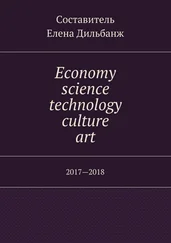At the end of this endeavor, it is now a pleasure to acknowledge (i) the encouragement initially provided by R. Conradt, N.G. Greaves, J. Livage, J. Lucas, B. Mysen, A. Takada, and Y. Yue when the project took shape; (ii) the warm welcome this project received through G. Geiger and A. Lekhwani when submitted to the American Ceramic Society and John Wiley & Sons; (iii) the invaluable help then brought all the way by Reinhard Conradt and Akira Takada through their constant advice, support, friendship, and careful reviewing work; (iv) the great many graphics and pictures neatly prepared by Joël Dyon to highlight the matter presented in numerous chapters; (v) the efforts of 151 authors working in 23 countries who participated in this ambitious endeavor and went responsively throughout an editorial process aimed at ensuring an overall homogeneity of style and content, and incorporated in their texts the relevant historical and cultural aspects evoked by the Encyclopedia title; (vi) the thoughtful comments and apt observations provided by nearly 200 reviewers whose names are included at the beginning of every chapter to recognize publicly their contributions; (vii) the original pictures or help in different matters generously provided by colleagues, friends, and institutions whose names are mentioned at the relevant places; (viii) the Humbold Stifftung, the Ludwig‐Maximilans‐Universität, and Donald Dingwell for the fruitful work done in Munich; (ix) the so many things about glass or high‐temperature techniques and processes discussed over the years with T. Atake, J.‐L. Bernard, Y. Bottinga, R. Conradt, K.‐U. Hess, R. Kerner, B. Mysen, G. Ottonello, J.‐P. Petitet, J. Roux, A. Sipp, J.F. Stebbins, A. Takada, C. Téqui, and other colleagues too numerous to be mentioned; (x) the Table of ion data compiled by J.F. Stebbins, the help provided at various stages of this study by É. Fareau, B. Gasparyan, K.‐U. Hess, A. Hofmeister, K. Meliksetian, B. Mysen, and M. Wolf as well as thoughtful comments by J.M. Parker and R.F. Tournier on the section introductions; (xi) and finally Michael Leventhal who oversaw the project at Wiley, Stefanie Volk for copy editing and Viniprammia Premkumar for smooth and responsive production of the book.
The Encyclopedia is dedicated to them and to all people whose efforts throughout the ages made glass the astonishing, ubiquitous material it has become.
Select Additional Reading
The Vitreous State
1 Bach, H. and Krause, D. (eds.) (1992–2020). Schott Series on Glass and Ceramics, 7 vols. Berlin: Springer.
2 Binder, K. and Kob, W. (2011). Glassy Materials and Disordered Solids, 2nd ed. Singapore: World Scientific.
3 Blanshard, J.M.V. and Lillford, P.J. (1994). Glassy Sate in Food. Loughborough: Nottingham University Press.
4 Donth, E. (2001). The Glass Transition. Berlin: Springer.
5 Doremus, R.H. (1994). Glass Science, 2e. New York: Wiley.
6 Gutzow, I. and Schmelzer, J. (2013). The Vitreous State: Thermodynamics, Structure, Rheology, Crystallization. Heidelberg: Springer.
7 Kerner, R. (2006). Models of Agglomeration and Glass Transition. London: Imperial College Press.
8 Leuzzi, L. and Nieuwenhuizen, L. (2008). Thermodynamics of the Glassy State. New York: Taylor & Francis.
9 Mackenzie, J.D. (ed.) (1960–1964). Modern Aspects of the Vitreous State, 3 vols. London: Butterworth.
10 Nemilov, S.V. (1995). Thermodynamic and Kinetic Aspects of the Vitreous State. Boca Raton, FL: CRC Press.
11 Rawson, H. (1967). Inorganic Glass Systems. London: Academic Press.
12 Scholze, H. (1991). Glass. Nature, Structure, and Properties. New York: Springer.
13 Shelby, J.E. (1997). Introduction to Glass Science and Technology. Cambridge: Royal Society of Chemistry.
14 Simmons, C.J. and El‐Bayoumi, O.H. (1993). Experimental Techniques of Glass Science. Westerville, OH: American Ceramic Society.
15 Varshneya, A. (2014). Fundamentals of Inorganic Glasses. Sheffield: Society of Glass Technology.
16 Zarzycki, J. (ed.) (1991). Glasses and Amorphous Materials. Materials Science and Technology. Weinheim: VCH.
17 Zarzycki, J. (1991). Glasses and the Vitreous State. Cambridge: Cambridge University Press.
Glass Systems and Properties
1 Affatigato, M. (ed.) (2014). Modern Glass Characterisation. Hoboken, NJ: Wiley.
2 Bange, K., Durán, A., and Parker, J.M. (eds.) (2014). Making Glass Better: ICG Roadmaps of Glass R&D with a 25‐Year Horizon. Madrid: Cyan.
3 Cable, M. and Parker, J.M. (1992). High‐Performance Glasses. Glasgow: Blackie.
4 Carroll, M.R. and Holloway, J.R. (eds.) (1994). Volatiles in Magmas. Reviews in Mineralogy, 30. Washington, DC: Mineralogical Society of America.
5 Cowie, J.M.G. and Arrighi, V. (2008). Polymers: Chemistry and Physics of Modern Materials, 3e. Boca Raton, FL: CRC Press.
6 Ebewele, R.O. (2000). Polymer Science and Technology. Boca Raton, FL: CRC Press.
7 Louzguine‐Luzgin, D.V. (2018). Metallic Glasses and Their Composites. Materials Research Forum LLC: Millersville, PA.
8 Musgraves, J.D., Hu, J., and Calvez, L. (2019). Springer Handbook of Glass. Berlin: Springer.
9 Mysen, B.O. and Richet, P. (2018). Silicate Glasses and Melts, 2nd ed. Amsterdam: Elsevier.
10 Odian, G. (2004). Principles of Polymerization, 4e. Hoboken, NJ: Wiley‐Interscience.
11 Painter, P.C. and Coleman, M.M. (2009). Essentials of Polymer Science and Engineering. Lancaster, PA: DEStech Publishing.
12 Paul, A. (1990). Chemistry of Glass, 2e. London: Chapman and Hall.
13 Pye, L.D., Montenero, A., and Joseph, I. (2005). Properties of Glass‐Forming Melts. Boca Raton, FL: CRC Press.
14 Rao, K.J. (2002). Structural Chemistry of Glasses. Oxford: Elsevier.
15 Richardson, F. (1974). Physical Chemistry of Melts in Metallurgy, 2 vols. London: Academic Press.
16 Suryanarayana, C. and Inoue, A. (2011). Bulk Metallic Glasses. Boca Raton, FL: CRC Press.
17 Stebbins, J.F., McMillan, P., and Dingwell, D.B. (eds.) (1995). Structure, Dynamics and Properties of Silicate Melts. Reviews in Mineralogy, 32. Washington, DC: Mineralogical Society of America.
18 Takada, A., Parker, J.M., Durán, A., and Bange, K. (eds.) (2018). Teaching Glass Better. Madrid: Cyan.
19 Tomozawa, M. and Doremus, R.H. (eds.) (1977–1985). Treatise on Materials 2. Science and Technology: Glass I‐IV. New York: Academic Pressn.
20 Uhlmann, D.R. and Kreidl, N.J. (1983–1990). Glass Science and Technology, 1. Glass‐Forming Systems; 2. Processing; 3. Viscosity and Relaxation; 4A. Structure, Microstructure, and Properties; 4B. Advances in Structural Analysis; 5. Elasticity and Strength in Glass. New York: Academic Press.
21 Vogel, W. (1994). Glass Chemistry, 2e. New York: Springer.
22 Wolf, M.B. (1984). Chemical Approach to Glass. Amsterdam: Elsevier.
23 Zanotto, E.D. (2013). Crystals in Glass: A Hidden Beauty. Hoboken, NJ: Wiley.
Compilations of Glass Data
1 Bansal, N.P. and Doremus, R.H. (1986). Handbook of Glass Properties. Orlando: Academic Press.
2 Mazurin, O.V., Streltsina, M.V., and Shvaiko‐Shvaikovskaya, T.P. (1987). Handbook of Glass Data. Part A. Silica Glass and Binary Silicate Glasses. Amsterdam: Elsevier.
3 Mazurin, O.V., Streltsina, M.V., and Shvaiko‐Shvaikovskaya, T.P. (1987). Handbook of Glass Data. Part C. Ternary Silicate Glasses. Amsterdam: Elsevier.
4 Mazurin, O.V., Streltsina, M.V., and Shvaiko‐Shvaikovskaya, T.P. (1993). Handbook of Glass Data. Part E. Single‐Component, Binary, and Ternary Oxide Glasses: Supplements to Parts A, B, C, and D. Amsterdam: Elsevier.
5 Turkdogan, E.T. (1983). Physicochemical Properties of Molten Slags and Glasses. London: The Metals Society.
Читать дальше












